Hybrids and electric cars are set to dominate the technology on display at the 2010 Geneva show, but there's also room for innovative aerodynamics (from the Opel / Vauxhall Flextreme GT/E concept) and a new extruded aluminium structure (underpinning the Fisker Karma hybrid).
Here are the technical hightlights due at this year's Geneva show.
Audi RS5 crown gear differential
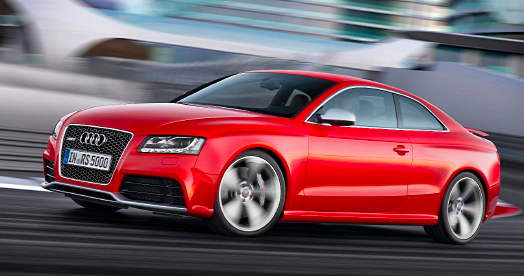
The quattro four-wheel drive system in Audi's new RS5 has a new type of centre differential using crown gears – gears with teeth at right angles to the gear wheel itself. Audi claims this new system offers high efficiency, low weight and compact size. Normally the RS5 has a 60/40 torque split biased towards the rear, but the new centre diff can transfer up to 70% of the torque to the front wheels or 85% to the rear.
Fisker Aluminium Spaceframe

The Fisker Karma's aluminium structure will be revealed for the first time at the Geneva show. The structure is said to be based largely on extruded aluminium components, with a stiff central box structure which houses the Karma's drive batteries. Overall torsional stiffness is said to be 33,000Nm/degree, very high for a long-wheelbase saloon.
Lotus Hybrids

Proton will be displaying an ItalDesign-styled plug-in hybrid city car concept with a powertrain (above) developed by Lotus Engineering. The Proton is designed to run off a battery for short journeys, while for longer journeys a Lotus Range Extender engine is used to replenish the charge in the battery and provide electrical power for the drive motors. The battery can also be recharged from a domestic mains electricity outlet.
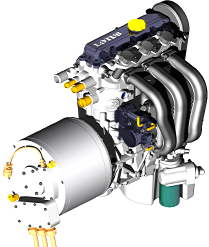 The Lotus Range Extender engine (right), first seen at the Frankfurt show in 2009, is a 1.2-litre, three-cylinder spark-ignition engine with monoblock construction – the block, cylinder head and exhaust manifold are formed from a single aluminium casting to reduce cost and weight, and improve durability. Unlike a conventional petrol engine, which is designed to give useful power over a wide speed range, the Lotus unit is optimised for generating electrical power at two engine speeds, 1500rpm and 3500rpm, where it produces 15kW and 35kW respectively.
The Lotus Range Extender engine (right), first seen at the Frankfurt show in 2009, is a 1.2-litre, three-cylinder spark-ignition engine with monoblock construction – the block, cylinder head and exhaust manifold are formed from a single aluminium casting to reduce cost and weight, and improve durability. Unlike a conventional petrol engine, which is designed to give useful power over a wide speed range, the Lotus unit is optimised for generating electrical power at two engine speeds, 1500rpm and 3500rpm, where it produces 15kW and 35kW respectively.
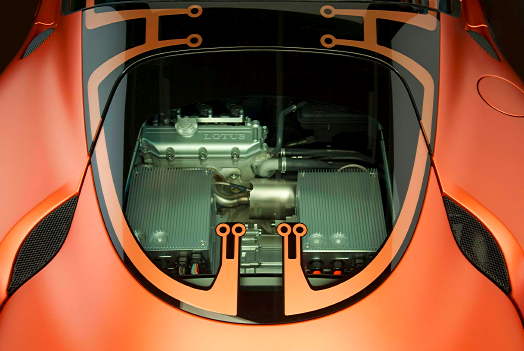
The Lotus Range Extender engine is also used in the Evora 414E Hybrid (above) which is driven by a pair of 207ps electric motors, each driving one rear wheel. Independent drive to the wheels enables torque vectoring: sending different amounts of torque to each wheel influences the car's handling balance.
Mercedes-Benz DISTRONIC and PRE-SAFE 360˚
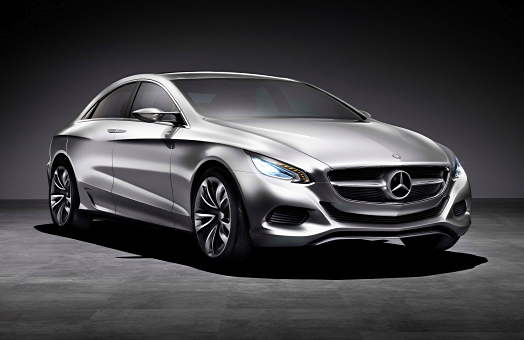
The Mercedes-Benz F800 Style research car includes two revised safety systems, DISTRONIC PLUS Traffic Jam Assistant and PRE-SAFE 360˚.
DISTRONIC PLUS, introduced in 2006, maintains the distance from the vehicle in front. The new Traffic Jam Assistant feature in the F800 Style automatically follows the vehicle in front even around a bend, yet can recognize when the vehicle in front changes lanes and avoids following it 'blindly'. Up to about 40km/h the driver does not have to steer. Beyond 40km/h the steering torque that keeps the vehicle in its lane is gradually reduced to a point at which the Traffic Jam Assistant disengages. The system automatically deactives if the driver makes an active steering movement.
PRE-SAFE 360° extends the existing PRE-SAFE system to monitor the area behind the vehicle. If the system anticipates a rear-end collision it applies the stationary car's brakes, which Mercedes says can help to 'prevent secondary accidents such as those that occur when the car is catapulted uncontrolled into an intersection or a pedestrian crossing'. The system automaticall deactivates if the driver takes control by, for instance, accelerating away from the impending accident.
Opel / Vauxhall Aeroblades
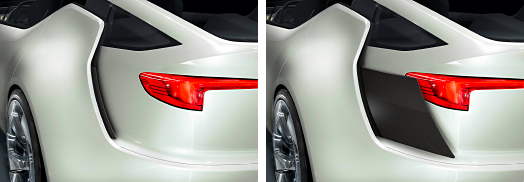
The Opel / Vauxhall Flextreme GT/E concept cars includes these side spoilers – GM calls them Aeroblades – which extend from the rear wheel arches when the Flextreme is travelling at more than 30mph. The 350mm-long spoilers guide air around the rear of the car to minimise drag at high speed. What isn't clear is why they're retractable – at low speeds their presence would not cause any significant drag. So why not just make the body that shape in the first place?
Peugeot HYbrid4

Peugeot's 5 by Peugeot concept carries its HYbrid4 drive system, which is due to hit production in the 3008 crossover in 2012. A front-mounted 2.0-litre, 163bhp diesel engine (7) driving the front wheels is supplemented by a 37bhp electric drive system for the rear wheels (1), supplied by GKN Driveline. This gives a total of 200bhp for maximum acceleration, part-time four-wheel drive, and an electric-only mode for low-speed operation.
In the 5 by Peugeot luxury saloon the result is claimed to be 74.3mpg and 99g/km of CO2, or zero in electric mode. The question mark concerns cost: modern diesels are complex and expensive to make, and the addition of an electric powertrain can only raise costs even further. Can Peugeot sell HYbrid4 for a reasonable price and still make money?
Renault EDC dual-clutch transmission
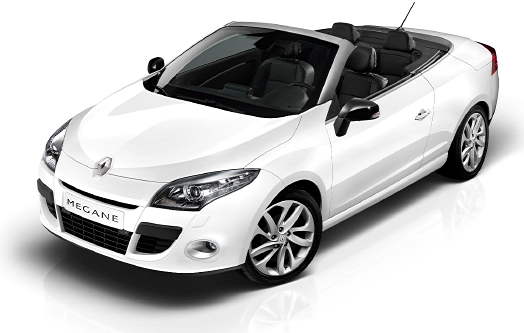
Renault is the latest manufacturer to jump on the bandwagon for dual-clutch transmissions. It's a six-speed transmission called EDC, for 'efficient dual clutch', though Renault has yet to reveal why it's any more efficient than the dual-clutch transmissions already in use by other manufacturers.
EDC will make its first appearance on the Megane CC (above) which is also being launched in Geneva. Though the Megane CC has six engine options, for now at least EDC will only be available with one of them – the lowest-spec 110ps diesel.
Volvo Pedestrian Detection
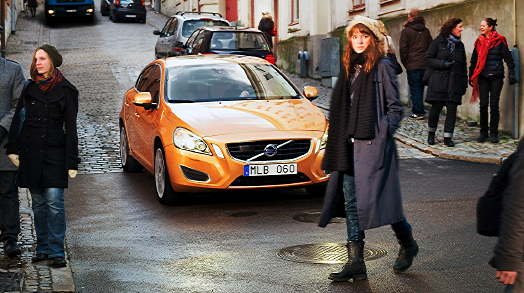
Volvo's new S60 shows off a new 'Pedestrian Detection' system which uses radar to detect a pedestrian in front of the car and applies the brakes if the driver does not intervene in time. Volvo claims that at speeds of less than 21mph the system can avoid a collision.